Programm
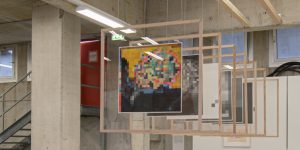
Cat: Collaborating with a Neural Network
Rachel Smith (UK)
Cat: Collaborating with a Neural Network is a conversation between Rachel Smith (human) and cifar10_cnn.py (artificial neural network). In order to communicate successfully, they must speak the same language. The method of communication is a human/machine compromise; a hand-painted grid of pixels.

Solar Walk
Réka Bucsi (HU)
Solar Walk shows the journey of individuals and their creations on through time and space. Any meaning behind the actions only exists from the viewpoint of the individual but not from the perspective of an entire solar system. Réka Bucsi conveys in her whimsical animation the melancholy acceptance of chaos as something beautiful and cosmic.
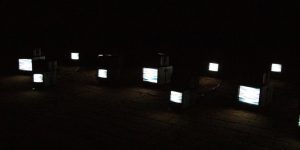
WM_EX10 TCM_200DV TP-VS500 MS-201 BK26 MG10
Stefan Tiefengraber (AT)
Unexpected and uncontrollable analogue signals are altered and bent by the artist to create an audio/video noise-scape. Pre-recorded (installation) or live audio signals, audible through speakers, are sent directly to CRT monitors mounted on the speakers, visualizing the signal in flickering and abstract shapes and lines in black and white to create a time-based sculpture.
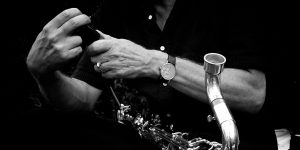
Tenebrae
Roberto Paci Dalò (IT)
A solo concert for clarinet (and bass clarinet) that works with the very special acoustics and reverbs of Sankt Florian’s Marmorsaal and evokes different musical styles from Gregorian to Monteverdi and Gesualdo da Venosa. Sometimes it makes a timbral memory appear, borrowed from practices and memories of electronic musical culture. Tenebrae (Latin for “darkness”) is a religious service of Western Christianity.

The SINE WAVE ORCHESTRA stay
Ken Furudate (JP), Daisuke Ishida (JP), Kazuhiro Jo (JP), Zuiki Noguchi (JP) / The SINE WAVE ORCHESTRA (JP)
The SINE WAVE ORCHESTRA has chosen to dedicate their work to the sine wave, said to be the most basic sound and therefore called pure tone, containing neither overtone nor noise but a single frequency. This work is defined by the interplay of visitors: Each spectator is given a small device which can play a sine wave and asked to choose its frequency and position on one of the columns of copper wire in the attic.
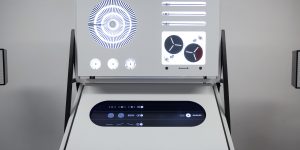
APPARATUM
panGenerator (PL)
Digital interface meets purely analogue sound. The APPARATUM was inspired by the heritage of the Polish Radio Experimental Studio — one of the first studios in the world to produce electroacoustic music. The installation draws inspiration musically and graphically from the “Symphony – Electronic Music” composed by Bogusław Schaeffer. Here, analogue sound generators, based on magnetic tape and optical components, are controlled via a graphic score with a digital interface. NOTE: You can create and listen to your own composition, print out your score and retrieve it in the online archive of APPARATUM.
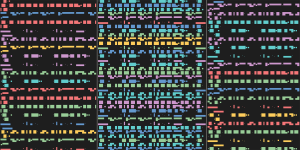
Voices from AI in Experimental Improvisation
Tomomi Adachi (JP), Andreas Dzialocha (DE), Marcello Lussana (IT)
Voices from AI in Experimental Improvisation is a project by Tomomi Adachi, Andreas Dzialocha and Marcello Lussana. They built an AI called “tomomibot” which learned Adachi’s voice and improvisation techniques using neural network algorithms. The performance raises questions about the logic and politics of computers in relation to human culture.
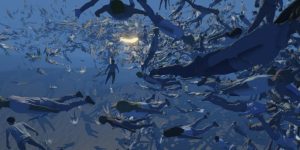
Emergence
Universal Everything (GB)
Emergence is an open-world environment and crowd performance. The virtual reality installation expresses the primal human desire to maintain individual identity while being part of a crowd. As the user navigates a crowd of thousands, shafts of light beckon them closer. As they touch the light, the environment responds in real time, continually challenging the user's perception. In this installation, Universal Everything experiments with software-based improvisation and custom-coded crowd simulations.
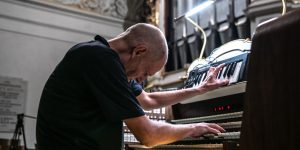
GRAND JEU 2
Wolfgang Mitterer (AT)
Electronics are operated live and represent a second organ with multiple possibilities when coupled with a keyboard and controllers. This results in a massive expansion of sound in every direction, from Baroque to Bruckner, and beyond.
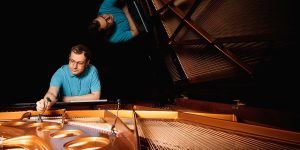
Automatic Music Generation with Deep Learning
Ali Nikrang (AT)
In recent years, there has been a great deal of academic interest in applying Deep Learning to creative tasks such as generating texts, images, or music. This workshop focuses on current approaches to music generation. We will also discuss questions like: What makes musical data so special? What can music enthusiasts expect from these models? And how do listeners accept music composed by AI?


